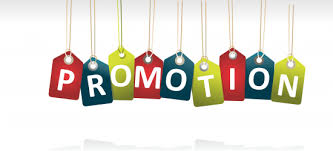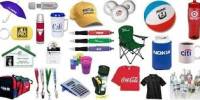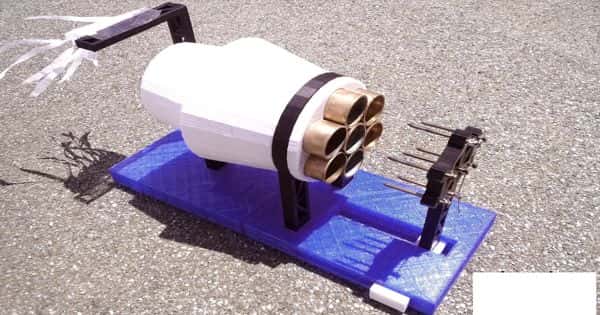Introduction:
Measuring the effectiveness of the promotional program is a critical element in the promotional planning process. Research allows the marketing manager to evaluate the performance of specific program elements and provides input into the next period’s situation analysis. It is a necessary ingredient to a continuing planning process, yet it is often not carried out.
We discuss some reasons firms should measure the effectiveness of their IMC programs, as well as why many decide not to. We also examine how, when, what and where such measurements can be conducted. Most of our attention is devoted to measuring the effects of advertising because much more time and effort have been expended development evaluation measures in advertising than in the other promotional areas.
It is important to understand that is to measure the effectiveness of advertising and promotion and to assess various strategies before implementing them. This is not to be confused with research discussed earlier in the text to help develop the promotional program, although the two can be used together. While evaluative research may occur at various times throughout the promotional process, it is conducted specifically to assess the effects of various strategies.
Types of Online Advertising:
Whenever the word online advertising is mentioned, the first thing that anyone thinks of is banner ads. However, banner ads are not the only form of online advertising by any means. This section will explore the different forms of online advertising and their uses. It is important to note that although there are numerous ways to advertise online, not all of them will suit the needs of all websites. Choosing the right method for your site is dependent on your GOPST analysis, as only a few types will help with your Plans and Strategies.
Some of the more popular means to advertise online are:
1. Pay Per Click/Pay Per Sale: Advertisers often develop deals with search engines or affiliate sites where they pay a predetermined amount for each click-through that is forwarded to them from the third party’s site. This practice is known as Pay Per Clickadvertising and it is useful in increasing traffic for the advertiser’s sites. However, this method does not guarantee any increases in sales since the potential customersmight just click through and move on.
Pay Per Sale on the other hand links the advertising costs to future
Some of the more popular means to advertise online are:
1. Pay Per Click/Pay Per Sale: Advertisers often develop deals with search engines or affiliate sites where they pay a predetermined amount for each click-through that is forwarded to them from the third party’s site. This practice is known as Pay Per Clickadvertising and it is useful in increasing traffic for the advertiser’s sites. However, this method does not guarantee any increases in sales since the potential customers might just click through and move on.
- Pay Per Sale on the other hand links the advertising costs to future.
2. Search Engine Order: Just as mentioned in the Search Engine Order (SEO) ranking section, Proactive and Paid submission of the advertiser’s site to the Search engine acts as another advertising method. Increasing your SEO ranking not only increases traffic to your site but acts as a means of advertising your brand. Often advertisers not only pay for the SEO submission fees but also for the services of SEO consultants in the hopes of taking advantage of this powerful tool. (For more details visit the SEO section)
3. Banner Advertising: horizontal bars placed at the top of a web page linking to the advertisers site. Banner ads usually have a lot of colour, graphics, animation and some statistics as they are used to promote, persuade and remind customers. Banner ads are by far the most popular means of online advertising, although it has been argued that banner ads are not effective in increasing sales. Opponents of banner advertising often argue that web surfers more often than not ignore banner ads and thus reducing their effectiveness. (For more details visit the Banner Ads section).
4. Sky-Scraper Advertising: a slang term used to refer to vertical spaces that run on the left or right sides of a page to display ads. Sky-Scrapers are similar in many aspects of their functionality to banner ads with the exception that they remain visible even when the visitor scrolls down the page. For this reason Sky-Scrapers are more expensive for the advertiser than banner ads.
(To see an example of the costs associated with Banner & Sky-Scraper Advertising visit the nickles.com website)
5. Sponsorships: a newer form of online advertising that allows the advertiser to sponsor a section or content of a page. Regular Sponsorships allow the advertiser to “rent” a section of the page to display their logo, a message or a promotion. Content Sponsorship allows the advertiser to submit the content they would like to display on the page and after evaluation this content is displayed/advertised. This gives the advertiser slightly less control in the message they want to advertise, but on the other hand it might be more effective in ensuring content integration between the page and the advertiser’s message. An example of Content sponsorships would be “This cool Video is sponsored by ABC.com”
6. Pop-ups and Pop-downs: new windows that appear as soon as the user types a website URL or click on a link from the third parties site. Pop-Ups open a new smaller window displaying the advertiser’s message and Pop-downs appear on the bar at the bottom of the screen. Often for the user to be able to close these messages, they would need to click on them making it an annoyance for the user. Today users often have programs that work to block these messages from appearing, thus making them really useless. (Some of the disadvantages associated with using Pop-up ads are highlighted on the AKA Marketing website)
7. Interstitial Advertising: similar to Pop-ups Interstitial ads open a when the user moves between pages on a site. Although the users can simply close when the user moves between pages on a site. Although the users can simply close them and move on, research has shown that they have higher click-through rates than banner ads as the visitor is forcefully exposed to them. If done properly interstitial ads can be a good method of exposing the visitor to the advertiser’s promotions while they are on the advertiser’s site. On the other hand if done poorly Interstitial Ads can be irritating and drive away a lot of potential customers.
8. Mailing Lists & Newsletters: newsletters or e-flyers that are e-mailed out to potential customers often after they have submitted their email address to the advertiser. In other instances the potential customers emails are bought from information mining companies and thus the mailing lists and newsletters may be undesirable to the potential customers. In this case, the mailing ists and newsletters are a form of spam and may have a negative effect for the advertisers. If done properly the mailing list and newsletter methods may be very efficient as it targets a specific demographic that has already showed interest in the company by voluntarily submitting their email address.
9. Online Coupons: just like traditional coupons, online coupons are a good way of attracting new customers to the advertiser. This method is effective in that it gives the consumers a reason to visit the advertiser’s site immediately to find out more information about not only the product but the company itself. These coupons may be distributed using a variety of the advertising methods mentioned above.
10. Other Online Advertising Methods
Some of the emerging Online Advertising methods include
a) Blogs
b) Podcasting
c) Product Specific forums
Although these methods are not primarily focused on advertising, they can substantially supplement the online advertising and marketing process.
(For more detail on these tools visit the Podcastingsection).
Reasons forMeasuring Advertising Effectiveness: Previously we mentioned that choosing the right method of online advertising depends on the business’ GOPST needs. The next section will highlight the reasons that make measuring the chosen method’s effectiveness an important aspect of the business’s success.
Reasons why Companies should Measure Advertising Effectiveness:
- Avoiding Costly Mistakes: According to emarketer.com, “Online advertising spending will reach $16.7 billion in 2006, eMarketer predicts. That’s a growth rate of 33.2%, the highest growth year-over-year expected this decade.” This means that companies are spending
Reasons why Companies should Measure Advertising Effectiveness:
Previously we mentioned that choosing the right method of online advertising depends on the business’ GOPST needs. The next section will highlight the reasons that make measuring the chosen method’s effectiveness an important aspect of the business’s success.
Reasons why Companies should Measure Advertising Effectiveness:
Key Points: As the saying goes, “a penny saved is a penny earned.” If advertisers think of the cost for efficiency testing as an investment that prevents future “costly mistakes” .
2. Evaluating Alternative Strategies: Not only is it important to evaluate the effectiveness of the chosen method, but also the opportunity costs of choosing that method. Often after companies have chosen a method, they focus their attention exclusively on that method ignoring the potential profits that would have come about if they went with an ulterior method. A good evaluation program will be able to analyze the effectiveness and the opportunity costs of the chosen method.
2. Evaluating Alternative Strategies: Not only is it important to evaluate the effectiveness of the chosen method, but also the opportunity costs of choosing that method. Often after companies have chosen a method, they focus their attention exclusively on that method ignoring the potential profits that would have come about if they went with an ulterior method. A good evaluation program will be able to analyze the effectiveness and the opportunity costs of the chosen method.
3. Increasing the Efficiency of Advertising: often after companies choose a particular method, they become attached to that method and lose sight of the initial goal they were aiming for. Because the marketers know what the intended message of that chosen program is, they expect their customers to know that message as well. A continuous evaluation of the chosen program will ensure that the message the consumers are receiving from this program is aligned with the message the marketer intended to send.
EMarketer’s “Measuring Online Advertising Effectiveness” article identifies four key mega marketing and media trends:
“1. Increasingly, when it comes to advertising and marketing, the consumer is in control; consumers are rejecting advertising they find objectionale, annoying or just plain boring; but they are seeking out ads they find entertaining or highly informative.
2. Companies are placing an increased focus on accountability and measurement of their advertising efforts; CMOs are now being held to the same ROI yardstick as their CFO and CTO counterparts.
3. Marketers are placing a greater emphasis on targeting, as a complement to their increasingly difficult-to-achieve mass reach efforts.
4. The media world continues to fragment, making it harder and harder for marketers to reach their desired target efficiently and effectively.”
As a result, the internet is being used more as an advertising medium. This leads to the importance for companies to learn about advertising effectiveness to attain more consumers and a greater ROI.
“Those marketers who aren’t interested in online may be out a job – soon – if they don’t prepare to engage the empowered consumer.” – Richard Tobaccowala, Group EPV, Starcom MediaVest.
THE CHALLENGE OF CONDUCTING EFFECTIVE PROMOTIONS:
Promotions are fact of life and a common currency in FMCG. Many would argue that consumers now have a basic expectation that much of what they buy, from groceries to lifestyle goods, will be subject to a promotional offer at some point or other. In the current economic downturn, the consumer expectation of valuable promotions has been increased as they expect retailers and manufacturers to share their pain. The current squeeze is a perfect storm of cost and demand drivers in a combination not seen before and it is causing consumers to consider affordability above all else in their purchasing decisions. Intense competition has driven the increased use of promotion mechanics over the last twenty years. Typically, in western economies, FMCG manufacturers have tended to invest around 15-25% of their total marketing budget in promotions. Recent history and current events suggests this spending will be seen to increase further, as consumption slows, in order to sustain sales levels.
Consumer expectation is further enforced by newer transactional vehicles, such as the internet, where additional discounts have been offered against high street store prices by vendors keen to increase sales volumes whilst reducing infrastructure and distribution costs. This combined with the provision of price comparison web sites by third parties such as mysupermarket.com and by retailers themselves (Tesco, Asda etc) further increases the marketers’ challenge from the well informed consumer customer. It is highly unlikely that we will see the demise of promotions in the foreseeable future. The whole philosophy is too deeply entrenched in the retailers’ competitive arsenal and the practice is likely to increase markedly, with the greater burden of the cost falling on the major brand manufacturers. Driven by category competition, retailer and consumer pressure and the increasing popularity of own brand and budget lines, CPG manufacturers will need to drive even more innovative promotions to protect market share and brand value. By the same token, retailers will need to balance short term gains on volume sales on own brand and economy lines, against the longer term impact on the profitability to them of established brands. All of these challenges have to be addressed in an environment where many
organizations have reacted to events by implementing restructuring and cost reduction activities, thus putting additional pressure on finite resources.
THE METHODS USED TO MEASURE PROMOTION EFFECTIVENESS:
There are essentially two broad schools of thought in terms of the overall approach to measuring promotion effectiveness. Both have been revolutionized by the advent of bar code driven EPOS scanners. These may be termed the; “product push” approach And the “customer pull” approach .The most frequently deployed method of analysis, has been developed around a product sales based approach and is heavily used by all the major global CPG manufacturers. This “product push” methodology centers upon, as the name implies, a product/brand and the outcome of various interactions around it. This can cover everything thing from new product development and launch tracking through to product display, product placement, ranging, sales, promotions, cannibalization, propensity for switching, stock availability, store planning, in fact almost everything involved in the journey from factory to customers’ shopping bag. Through many years of involvement with its clients, IRI has contributed to decisions made around the promotion of a brand or product, which draw on information extracted from data from a variety of processes. These inevitably incorporate both quantitive and qualitative output. IRI EPOS data ultimately reveals the impact of changes to the baseline position of the product whilst our market research, in-store shopper insights, panel data and processes like footfall studies add further qualitative outputs to build a more complete picture. This approach has brought significant value to our CPG manufacturing clients who traditionally do not own andmanage a direct relationship with the end consumer customer. In order to continue to provide relevance and powerful insights, the major vendors of market information to manufacturers are continuing to develop new and innovative offerings around predictive analysis and “what If” scenario sand box services to reduce time lines and speed of response to the market.
A pact is an agreement or promise you make with others or, sometimes, yourself. Usually made to help solve a problem or reach a goal, a pact can be a legally binding document or just something you scribble on a piece of paper. Some pacts are as short as a few sentences, while others are many pages long. Written pacts should be worded carefully because whatever is agreed to is a promise that must be kept.
Instructions:
- Use simple but precise language and avoid complicated legal terms that need too much explanation. If a pact is easy to understand, the parties are more likely to keep to it.
- State who will be responsible for specific tasks and what they are expected to do to achieve their goals. Write down what is acceptable and what will cause the pact to fail.
- Include a time line for items to be acted upon and a deadline for the pact’s goals to be satisfactorily fulfilled by all parties involved. Identify any actions that may have flexible time lines and include alternate deadlines.
- Include any potential expenses and specify which party will be expected to pay for them. Will you cover all expenses? Will your friend pay half? Who will be required to pay any unforeseen costs and how long will they be given to pay before the pact is declared null and void?
- Explain what happens if a dispute arises. Will one of the parties make the final decision? Will someone else decide who has failed to follow the requirements of the pact? Is professional mediation a possibility? What happens in the event of expenses incurred from a dispute? When a dispute decision maker is identified in a written pact and that document has been signed, it is more difficult for a disgruntled party to object to the decision made.
- Add as much information as necessary to cover all foreseeable outcomes. For instance, if you are writing a pact with your friend promising you both will lose 20 pounds by a specific date, what happens if one of you gets sick?
- Define the expected results of the pact. Be precise. In most pacts or agreements there are several possible outcomes. Make sure the outcome you want is specifically written in the document and that all parties understand no other outcome fulfills the requirements of the pact.
Strengths and Weaknesses of Focus Group Research
Strengths
- Understand the why behind behaviors and attitudes
- In depth discussion of concepts
- Able to clarify responses and probe for additional information
- Participants can see, hear, touch and experience the product
- Incorporate group dynamics to enable further discussion around varying opinions shared
Weaknesses
- Gather opinions from a small number of people
- Participants are not representative of population
- Results are not projectable to population
- Opinions can be influenced by others in the group
Uses
- Generate new product or service ideas
- Measure reactions to concepts
- Evaluate key features and benefits
- Assess communication of product message
- Provide ideas for revitalization
- Evaluate packaging design and advertising
- Demonstrate products and conduct taste tests
How To Do Brand Tracking Studies:
In Brand tracking studies are an important tool in the day-to-day decisions brand managers make. They allow marketers to monitor a brand’s health and adjust marketing programs.
WHAT SHOULD BE TRACKED?
Each brand faces different issues, which often required customized tracking surveys. Nonetheless, at Insights we always recommend our clients to include measurements of awareness, usage, brand attitudes, perceptions, and purchase intent in brand tracking studies.
- Awareness: this is often tracked through measures of brand recall and recognition. A brand that it is easily recalled in certain situations is more likely to be considered for purchase than one that is only recognized when it is prompted to the consumer.
- Usage: this can be measured through recency, frequency of usage, and total spending in the brand, and product category. These brand tracking measures, tell us about consumer shopping behavior and preferences. They are also indicators of market share and share of wallet.
- Brand Attitudes and Perceptions: this is usually captured through questions related to brand image and associations that consumers develop based on their experience with the brand and exposure to its message through PR, advertising and promotional programs. Brand associations include beliefs about product- and non-product related attributes and benefits, as well as perceptions related to price and value. Some brand associations are stronger than others, are more easily recalled and are appealing enough that they become a driver in a consumer’s decision to buy a brand.
Many times, attitudes towards a brand go beyond the product to include attitudes toward the company. We are all aware how Toyota’s image has been damaged, not only by the car recall due to defective accelerator pedals in several car models, but more so by how the company failed to promptly notify car owners. A before-and-after-the-recall study conducted by Lightspeed and Ad Age, showed how the number of Toyota owners that consider the brand reliable has decreased significantly, indicating how fast a brand image can weaken when a company doesn’t react quickly enough.
- Purchase intent: measures of likelihood to buy a brand or switch to a competitor are also indicators of brand health and should be part of brand tracking studies. These questions should be put in context regarding specific product or brand, reason for the purchase, time, channel, price and other relevant factors to the purchase decision, so they can be predictive of actual purchase behavior.
WHEN AND WHO TO TRACK?
Brand tracking studies usually involve collecting quantitative data from consumers on a regular basis. One way to do it is to continuously collect information, which provide a more representative picture of how the brand stands and allow us to control for unusual marketing activities during the analysis. However, this type of brand tracking may not be feasible due to budget and resources constraints. Fortunately, tracking at specific time intervals (monthly, quarterly, annually, etc.) can be equally effective.
When determining the frequency of data collection in brand tracking studies, we recommend clients to consider:
- Frequency of product purchase: long purchase cycles can be tracked less frequently.
- Marketing activity in the product category: product categories with a lot of marketing activity should be monitored more often.
- Level of competition in product category: highly competitive product categories, where new products and competitors are constantly trying to break in, should be tracked regularly.
- Stability of brand associations: brands with an established image that don’t change much over time, can be tracked less often.
Brand tracking studies are usually conducted with current customers, but monitoring non-users of the brand can prove to be invaluable to the development of acquisition and market penetration strategies.
HOW TO INTERPRET BRAND TRACKING MEASURES?
Although for comparison purposes brand tracking measures tend to stay the same over time, they should be revised from time to time to assess their reliability and sensibility, so they don’t become unable to capture important shifts in the market due to changes in socio demographic trends, competitive landscape and economic macro trends.
Another issue with brand tracking measures is defining what constitutes the desirable level of specific metrics. Is a 70% level awareness good enough? It depends on the product category and the competitive environment. In low-involvement product categories and those with many competitors, it may be difficult to get very high levels of awareness and strong brand associations, so “good” levels for any metric differ across industries and product categories.
Finally, each brand tracking study should be customized to capture the brand associations that contribute the most to brand equity and the marketing activities supporting the brand. The goal is to identify key drivers that make a difference on consumers’ brand choice and purchase behavior and develop marketing tactics that lead to brand growth.
Present arguments for and against measuring effectiveness:
There are two reasons of arguments for and against measuring effectiveness in promotional program. These are- reasons to measure effectiveness and reasons not to measure effectiveness. Describe that portion-
Reasons to measure effectiveness:
Assessing the effectiveness of ads both before they are implemented and after the final versions have been completed and fielded offers a number of advantages:
1. Avoiding costly mistakes: The top three advertisers in the United States spent over $11 billion in advertising and promotion in 2006.The top 10 spent a total of over $29 billion. This is a lot of money to be throwing around without some understanding of how well it is being spent. If the program is not achieving its objectives, the marketing manager needs to know so he or she can stop spending money on it.
2. Evaluating alternative strategies: Typically affirm have a number of strategies under consideration. For example, there may be some question as to the degree to which each medium should be used or whether one message is more effective than another. Or the decision may be between two promotional program elements. We have noted previously that many marketers are shifting dollars from traditional to nontraditional media.
3. Increasing the efficiency of advertising in general: Sometimes advertisers get so close to the project they lose sight of what they are seeking, and because they know what they are trying to say, they expect their audience will also understand. They may use technical jargon that not everyone is familiar with. Or the creative department may get to creative or too sophisticated and lose the meaning that needs to be communicated.
4. Determining if objectives are achieved: In a well-designed IMC plan, specific communication objectives are established. If objectives are attained, new ones need to be established in the text planning period. An assessment of how program elements led to the attainment of the goals should take place and reasons for less-than desired achievements must be determined.
Companies give a number of reasons for not measuring the effectiveness of advertising and promotions strategies:
Reasons not to measure effectiveness:
- COST: Perhaps the most commonly cited reason for not testing is the expense.In one of the surveys reported, it was noted that while some companies spend as much as 25 percent of their revenue on marketing and advertising, 70 percent of them spend less than 2 percent on measuring effectiveness. Good research can be expensive, in terms of both time and money. Many managers decide that time is critical and they must implement the program while the opportunity is available. Many believe the monies spent on research could be better spent on improved production of the ad, additional media buys, and the like. For example, one of the nation’s leading brewers watched its test-market sales for a new brand of beer fall short of expectations. The problem, it thought, was an insufficient media buy. The solution, it decided, was to buy all the TV time available that matched its target audience. After two months sales had not improved, and the product was abandoned in the test market. Analysis showed the problem was not in the media but rather in the message, which communicated no reason to buy.
- RESEARCH PROBLEM: A second reason cited for not measuring effectiveness is that it is difficult to isolate the effects of promotional elements. Each variable in the marketing mix affects the success of a product or service. Because it is often difficult to measure the contribution of each marketing element directly, some managers become frustrated and decide not to test at all. They say, “If I can’t determine the specific effects, why spend the money?”
- DISAGREEMENT ON WHAT TO TEST: The objectives sought in the promotional program may differ by industry, by stage of the product life cycle, or even for different people within the firm, and as shown in the lead- in to this chapter there are numerous ways to measure these and not always a consensus as to what measure should be used. The sales manager may want to see the impact of promotions on sales, top management may wish to know the impact on corporate image, and those involved in the creative process may wish to assess recall and recognition of the ad. Lack of agreement on what to test often results in no testing.
- THE OBJECTION OF CREATIVE: It has been argued by many that the creative department does not what its work to be tested and many agencies are reluctant to submit their work for testing. This is sometimes true AD agencies creative departments argue that tests are not true measures of the creativity and effectiveness of ads; applying measures stifles their creativity; and the more creative the ad, the more likely it is to be successful.
- TIME: A final reason given for not testing is a lack of time. Managers believe they already have to much to do and just can’t get around to testing, and they don’t want to wait to get the message out because they might miss the window of opportunity.
















